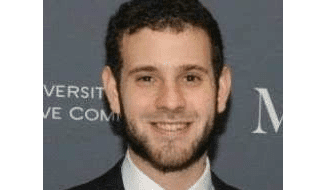
Samaura Stone, Senior Policy Associate
I spent days reviewing a thick accordion style folder. I created a timeline and attempted to piece together how the events referenced in the file warranted the removal of two children from their home. In an attempt to speak with the kids, I made several calls to caseworkers. I was not able to confirm their location due to the case transferring multiple times within the last six months. After weeks of calling, I finally received a return call from the new caseworker. I learned that the kids had been removed from two foster care placements already due to physical abuse. I struggled to understand how children could be removed from their parents for suspected neglect and then placed in homes where they were less safe.
I was finally able to meet with the children. Despite the circumstances, they appeared to be doing fine. The way in which they described their mother provided me with the image of a young mother that was trying her best to take care of them. They wanted to see her and missed their family dinners. There were several moments in our conversation that I had to remind myself that I was speaking with an 11 and 5 year old. They asked me questions that I did not have an answer for, such as “when can we go home?” The older kid talked about his passion for music and poetry, he wanted to share his gift with the world. I was impressed and touched by these young men. They expressed their feelings in a way that most adults struggled with. I inferred that they had regular conversations with their mom based on how they communicated with me and how they channeled her voice throughout our conversation. If there is any truth in the saying that “children are often a reflection of their parents” then I knew that their mother was a remarkable young woman that had instilled many important values in them. After our discussion, all that I could think about was where did we fail this family? And my hope was that we had the chance to make things better.
This was my first case that I was assigned to as a Court Appointed Special Advocate and over the course of four years, I was in and out of courtrooms and on a roller coaster ride filled with raw emotions. There were small victories and monumental setbacks. At one point the kids were moved to California for a year. I successfully advocated for their return after suspected and later confirmed neglect. The mother was battling not just a system that as she put it “viewed her as the problem,” but she was also fighting against something that she was unaware of and could not change and that’s time. The Adoption and Safe Families Act (ASFA) limits the amount of time that families involved in foster care have to reunify. If a child is in foster care for 15 out of the most recent 22 months then the state must file a petition to terminate parental rights (TPR) on behalf of the child.
The reason why the children initially came into care is still quite puzzling, but as the case progressed, it was revealed that the mother struggled with mental health and substance-use issues that were further exacerbated by the removal of her children. I had worked in a residential substance abuse treatment center for women returning home from prison and I knew that the ASFA time limit was going to be a barrier for her. I had listened to countless women talk about losing their children to foster care. I knew that on average it took at least a year to fully gain sobriety and even longer when there are additional instabilities. I was also knowledgeable about the limited treatment options and that many centers were not equipped to handle co-occurring disorders. The mother needed a holistic, trauma-informed intervention that would also address her mental health needs. In my court report, I had recommended this type of intervention that I imagined would be perfect for her, but it did not exist. I watched helplessly as she entered into various rehabilitation centers, became homeless, went to jail and struggled with the stigma and shame of it all. I spoke with her often and as she shared pieces of her painful childhood, it was difficult not to imagine a different outcome. I wanted her to make it to the other side, as I was rooting for her to persevere. I was invested in this case and realized that I was depending on her to make it because I knew that she needed her children and most importantly they needed her. Despite years of advocacy and her consistent work towards reunification, I had to finally surrender to the fact that her kids were not returning home.
In one of my final conversations with the mother, I apologized to her. I was sorry that her kids ever came into foster care and for the physical abuse they endured prior to me taking the case. I struggled to reconcile with how a system that was plagued with mistakes could possibly expect parents to be perfect. I wanted to create a formula that could measure the amount of effort she put into meeting the conditions that had to occur before reunification could take place. But what I truly wanted was to see equity and a compassionate approach. I wanted her to be viewed not just in her worse moment, but also by her potential to be so much more. I ended our conversation by telling her that I know she tried her very best.
Over nine years have passed since I was assigned to this case and it remains the most challenging case that I have been a part of. I have had the privilege to work with many families in foster care over the years in various capacities through a social work and policy lens. As I reflect on the current state of our child welfare system and the poor outcomes for our foster youth, only 51 percent graduate high school and only two percent attain a college degree. I know that we can do much better. Recent stories, such as the tragedy and death of the Hart children and Foster Care as Punishment: The New Reality of Jane Crow, are too well-known and remind me of just how far we have to go.
I am also filled with great hope when states, such as New York and many others as recent as this year have implemented provisions to prevent or postpone triggering the TPR filing. For example New York’s provision declares, “The state shall not petition for TPR if the sole basis would be that “the parent or parents are incarcerated, or participating in a residential substance abuse treatment program, or the prior incarceration or participation of a parent or parents in a residential substance abuse treatment program is a significant factor in why the child has been in foster care for fifteen of the last twenty-two months.” The recent passage of the Family First Prevention Services Act as part of the Bipartisan Budget Act is another step in the right direction. The bill seeks to prevent children from entering foster care by permitting federal reimbursement for mental health services, substance use treatment, and in-home parenting skills training. It also strives to improve the well-being of children already in foster care by incentivizing states to reduce placement of children in congregate care.
The current opioid problem has brought a sense of urgency and media attention to the foster care system. State agencies and federal data have confirmed an increase in children entering foster care as a result of the rise in parental substance use. It has also illuminated many of the gaps in services that must be fixed. There are approximately 500,000 children and youth in foster care with endless potential. Many have caring parents and loved ones that are struggling to overcome life’s obstacles. They are all counting on us and deserve our very best.






